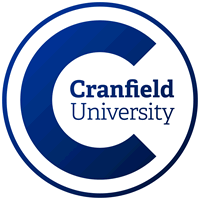About the Project
The aerospace industry has seen major technological advancements in the last 30 years; both in design, materials and manufacturing. The next revolution, driven by efficiency and environmental concerns, aims to move away from the traditional tube-and-wing configurations where only incremental improvements can be made. The industry is now focusing on radical concepts that promise to provide step increases in efficiency – such as high aspect ratio wing configurations. Dr Lone is currently involved in the Agile-Wing-Integration project, which deals with the design of this new high aspect-ratio wing.
In this context, having an accurate flight physics model is of paramount importance. Today, numerous computationally expensive modelling tools exist, but there is a lack of “fast” numerical tools that can be used in the conceptual design stages for de-risking a concept from nonlinear flight dynamics and aeroelastics perspective. Typically, a non-linear finite element model with hundreds of degrees-of-freedoms is used, but when dealing with transient responses several iterations are necessary to guarantee convergence, rendering it often unfeasible to run in “real-time”.
The project aims at using the recent development in non-linear system model reduction (in the last 2 years there have been promising development in this mathematical area) and adapting these to work with a Timoshenko beam model, to reduce the structural dynamics of a wing to a few degrees of freedom non-linear model. This would be a ground-breaking result as currently this method has been applied successful only on numerical models and in certain specific conditions (e.g. low damping modes).
Cranfield overview and Sponsor Information/Background: This is an EPSRC sponsored project and the candidate will be based in the Aerospace Integration Research Centre, where both supervisors are working and have access to: the Aeroelasticity laboratory (AIRC), the Shaker lab and the National Wind Tunnel Facility. The results of this project will also be useful for the Agile Wing Integration project.
The main objectives of the project are:
• Adapting and modifying reduced order model strategies to work with non-linear geometric continuous models with numerical and experimental data.
• Developing solutions and algorithms for carrying out non-linear experimental modal analysis.
• Integration of the reduced model in a coupled simulation environment.
The studentship will support expenses of the project, provide travel bursaries for training, a non-linear system workshop and conferences. Moreover, a training period on mathematical reduced order modelling at Aston University will be supported by the studentship.
The PhD studentship aims at demonstrating the capabilities of reduced order model strategies in aeronautical engineering, especially for flight dynamics and control algorithms. The project will have a software phase at the beginning (preliminary analysis on numerical models) and at the end (integration). In between these two phases, experiments will be carried out on an existing scaled model of a wing, using shakers, accelerometers and laser vibrometers. Thus, the resulting model will be tuned on experimental data, which will be a ground-breaking result.
The simulation toolbox will be enriched by the possibility to use a reduced-model instead of using a full-order finite element model. Consequently, the requirements of the simulation toolbox will be considered since the beginning of the project.
Funding Notes
Normally, to be eligible for a full award a student must have no restrictions on how long they can stay in the UK and have been ordinarily resident in the UK for at least 3 years prior to the start of the studentship (with some further constraint regarding residence for education). For more details: https://epsrc.ukri.org/skills/students/help/eligibility/

 Continue with Facebook
Continue with Facebook

